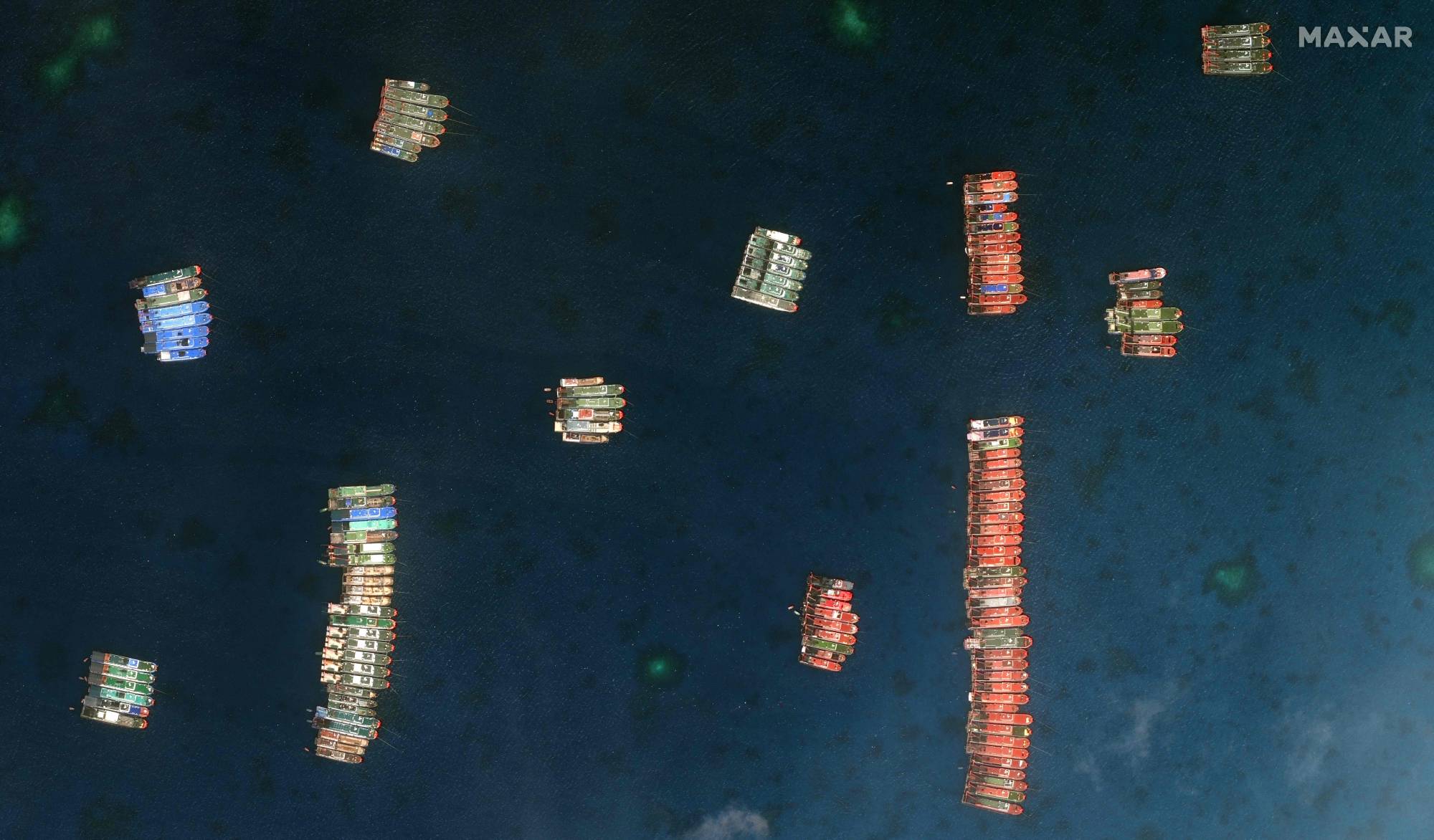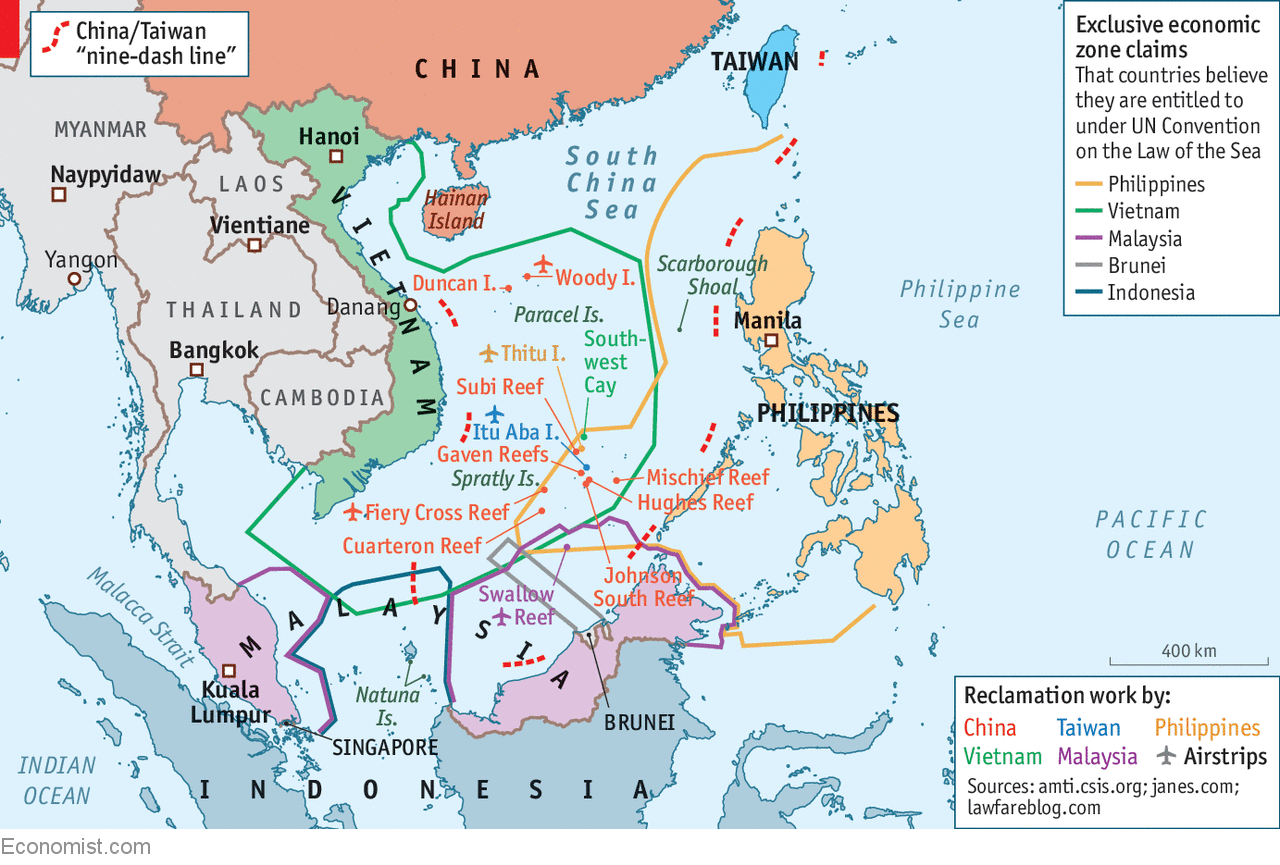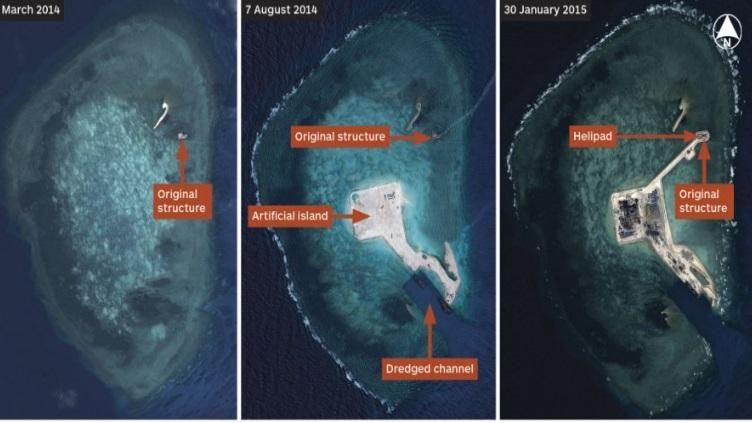Asia’s new battleground: the South China Sea and the Future of Global Order
If there is one geopolitical flashpoint with the potential to ignite a truly global conflict, it is undoubtedly the South China Sea. This is where the unimaginable is beginning to look like the inevitable, as a whole host of nations sleepwalk towards a cataclysmic showdown.
Perched at the maritime heartland of Asia, the hotly-contested and resource-rich seascape is not only an artery of international commerce, where up to $5 trillion in commodities pass annually, but also the ultimate theater of superpower rivalry.

The South China Sea is also where the parameters of the Sino-American “New Cold War” is most pronounced and, accordingly, profoundly troubling. Crucially, it is where China’s liminal bid for supremacy is nakedly visible, with potentially dire consequences for its much smaller and deeply vulnerable neighbors.
The calm before the storm
Not long ago, the disputed waters were a relatively obscure part of the world, ringed by a coterie of seemingly pacifist and staunchly mercantilist nations. With the end of the long Cold War, which claimed millions of lives in Asia, economic development became the overriding obsession of regional governance and national politics in the region.
Soon, Singapore became a global entrepot, hosting trillions of dollars in maritime trade passing through the Malacca Straits, while Thailand turned into the “Detroit of Asia”, churning out millions of cars in behalf of Japanese manufacturers. Meanwhile, Malaysia, Indonesia, the Philippines, and more recently Vietnam, became the “Tiger Cub” economies following years of above-average growth rates.
All the while, post-Mao China experienced the greatest capitalist expansion in human history, lifting hundreds of millions of souls out of poverty within a single generation. Encouraged by post-Cold War zeitgeist of optimism and audacity, the Association of Southeast Asian Nations (ASEAN) took up the cudgels for creating a more inclusive, stable and prosperous order in the broader East Asian region.
The ASEAN Regional Forum (ARF), for instance, provided an unprecedented platform for constructive and institutionalized dialogue among all major powers, including the US, China, Japan, India, Australia, the European Union and, more recently, even Russia.
Thanks to the ASEAN Free Trade Area as well as the ASEAN Plus Three (including China, Japan, and South Korea) platform, the regional body became increasingly confident of creating a pan-Asian economic and geopolitical bloc. The upshot of this strategic exuberance is the eventual establishment of the much-vaunted Regional Comprehensive Economic Partnership (RCEP), which includes 15 of the biggest and most promising economies across the region, except India.
It did not take long before cracks began to appear in this façade of amity and cooperation. The concatenation of multiple factors – namely, the rise of popular nationalism and territorial revanchism, competition over precious energy and fisheries resources, and China’s rapid rise and attendant shock to the regional balance of power – turned the deceptively calm waters of the South China Sea into a geopolitical tinderbox.

A rude awakening
As early as 1995, Beijing’s strategic opportunism was on full display, as the Asian powerhouse coercively occupied the Mischief Reef, a low-tide elevation in the South China Sea that falls within the exclusive economic zone and continental shelf of the Philippines. It is doubtful whether China would have undertaken this maneuver had American troops not evacuated the Subic and Clark bases in the Philippines just a few years earlier.
To assuage its frightened neighbors, China reluctantly agreed to the 2002 Declaration on the Conduct of Parties in the South China Sea, but predictably dragged its feet on a legally-binding Code of Conduct that would effectively constrain its adventurism in adjacent waters.
Things came to a head in the late-2000s, when Malaysia and Vietnam asserted their claims in the South China Sea through a legal submission to the United Nations. In response, China lashed out at its smaller neighbors for “internationalizing” the disputes and began to actively assert its so-called “nine-dash line” claims, which covers the bulk of the South China Sea.
Soon, a series of naval showdowns, especially the months-long standoff between China and the Philippines over the Scarborough Shoal in 2012, catapulted the South China Sea disputes to the global headlines. Following the de facto occupation of the Scarborough Shoal, with the Obama administration stubbornly prevaricating on its alliance commitments to the Philippines, China sensed a historic opportunity for full domination of Asia’s maritime heartland.
In late-2013, China upped the ante by launching an unprecedented geoengineering project in the high seas, rapidly transforming disputed sandbars, atolls and rocks into massive islands with state-of-the-art military airstrips and military facilities.

In response to China’s aggressive actions, the Philippines launched a legal warfare (lawfare), culminating in the 2016 arbitral tribunal award at The Hague, which nullified a bulk of China’s expansive claims as inconsistent with the United Nations’ Convention on the Law of the Sea (UNCLOS). But Beijing has rejected the arbitral ruling as “null and void”, maintaining its “inherent and indisputable” sovereignty claims over much of its adjacent waters.
Numerically-speaking, Vietnam leads the pack in terms of the number of land features (21) under its control in the Spratly Islands, followed by the Philippines (8), China (7), Malaysia (5), and Taiwan (1). But China’s reclamation activities from the Paracel Islands, also claimed by Vietnam, in the north to the Spratlys, also claimed by the Philippines, Vietnam, Malaysia and Taiwan, in the center of the South China Sea, is unparalleled in size, speed and quality.
To put things into context, China’s Sansha City, an artificially reclaimed prefecture perched on the Woody Island in the Parcels, now covers 800,000 square miles of sea and land, about 1,700 times the area of New York City. The reclaimed area hosts, according to Zachary Haver of the U.S. Naval War College, “[an] expanded port infrastructure, seawater desalination and sewage treatment facilities, new public housing, a functioning judicial system, 5G network coverage, a school and regular charter flights to and from the mainland.”
The Thucydides trap
Officially, the United States maintains “neutrality” over the sovereignty claims in the South China Sea. But it has a direct stake in the disputes for four key reasons, namely its (i) mutual defense obligations to the Philippines in an event of conflict with a third party; (ii) its commitment to international law as a signatory to (though yet to rarify) the UNCLOS; (iii) reliance on maritime commerce in the area for its own economic prosperity; and (iv) deep concern over China’s attempts to restrict US naval deployments in Asian waters.
In response, the Trump and, now, Biden administrations have increased maritime security aid to and military drills with regional allies and partners; expanded naval deployments to the vicinity of China-occupied islands under so-called “freedom of navigation” operations in the South China Sea; and repeatedly underscored Beijing’s obligations to comply with prevailing international law.
For Washington and likeminded powers – from fellow Quadrilateral Security Dialogue (Quad) members from Japan and Australia to India, as well as the European powers of Britain, Germany and France – China’s rising assertiveness represents a direct threat to regional peace and security.
There are two major areas of concern for the international community and China’s smaller rivals in the ASEAN. One is China’s rapid militarization of the disputes, including through the deployment of surface-to-air-missiles and other advanced weaponries to reclaimed islands.
Thanks to its sprawling network of airbases and military facilities – from the Fiery Cross and Mischief Reef in the Spratlys to the Woody Island in the Paracels – the Asian powerhouse could soon be in a position to impose an Air Defense Identification Zone (ADIZ) and, accordingly, restrict aerial access by rivals and external players across the South China Sea basin.
The other source of concern is China’s “militarization” of the disputes through weaponizing its coast guard vessels, as well as the deployment of an armada of para-military vessels, which most recently ignited a month-long standoff with the Philippines over the Whitsun Reef. The US quickly expressed its displeasure by deploying multiple warships, including an aircraft carrier, to the area in a clear show of force against China, as well as support for its Southeast Asian ally.
As in the Peloponnesian War between Athens and Sparta, a rising and confident power (China) is challenging an increasingly anxious status quo power (US) in one of the world’s most important waterways. If left unchecked, the South China Sea disputes will either end up in China’s domination of Asia’s maritime heartland or, even worse, drag both major and minor powers into a cataclysmic conflict.
As in every multidimensional and high-stakes conflict, there is no magical solution. But what is clear is that constraining China’s hegemonic ambitions is a sine qua non for avoiding a strategic nightmare in the world’s most dynamic region. To be sure, the Asian superpower is, unlike the Soviet Union, too big and too integrated in the global economic system to be “contained” a la Cold War years.
But China can and should be constrained through a multilateral approach, involving both the ASEAN and other likeminded major powers, which deftly combines strategic deterrence with engagement to check China’s worst instincts. What is at stake is not only the future of Asia, but also the 21st century global order.
